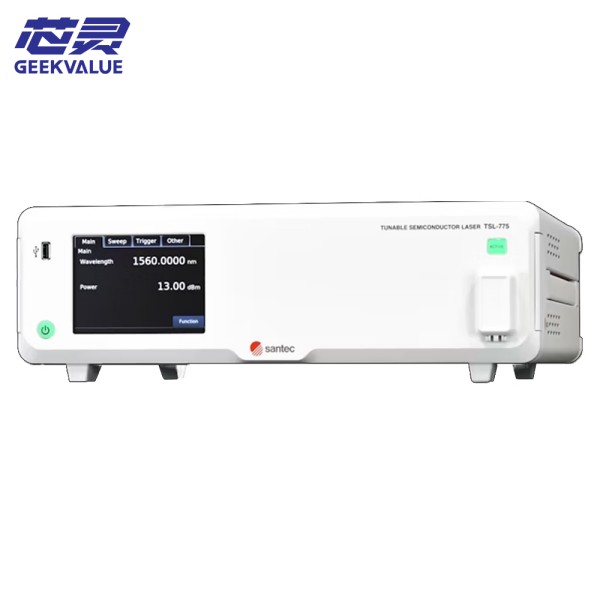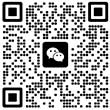Santec TSL-775 is a high-power, wide-tuning-range tunable laser designed for optical communication testing, optical sensing, photonic integrated circuit (PIC) characterization, and cutting-edge scientific research. As a representative of Santec's high-end tunable laser series, TSL-775 excels in output power, wavelength accuracy, and tuning speed, and is suitable for applications with stringent requirements on light source performance.
1. Core features and technical advantages
(1) Широкий діапазон налаштування довжини хвилі
Wavelength range: 1480–1640 nm (covering C-band and L-band), compatible with mainstream fiber optic communication windows.
Tuning resolution: 0.1 pm (picometer level), supporting high-precision wavelength scanning.
(2) High output power
Maximum output power: 80 mW (typical), meeting the needs of long-distance fiber testing and high-loss device characterization.
Power stability: ±0.02 dB (short term), ensuring test data reliability.
(3) High-speed wavelength tuning
Tuning speed: up to 200 nm/s, suitable for fast scanning applications (such as spectral analysis, OCT).
Wavelength repeatability: ±1 pm, ensuring consistency of multiple scans.
(4) Low noise and narrow linewidth
Spectral linewidth: <100 kHz (coherent communication level), extremely low phase noise.
Relative intensity noise (RIN): <-150 dB/Hz, suitable for high-sensitivity detection.
(5) Flexible modulation and control
Direct modulation bandwidth: DC–100 MHz, supporting analog/digital modulation.
Interface: GPIB, USB, LAN, compatible with automated test systems.
2. Typical application areas
(1) Optical communication testing
DWDM system verification: simulate multi-wavelength channels, test optical modules and ROADM performance.
Silicon optical device characterization: measure the wavelength-dependent response of modulators and waveguides.
(2) Оптичний датчик
FBG (Fiber Bragg Grating) demodulation: high-precision detection of wavelength shift caused by temperature/strain.
Distributed fiber sensing (DAS/DTS): provides high-power, stable light source.
(3) Photonic integrated circuit (PIC) testing
Silicon photonic chip debugging: fast wavelength scanning, evaluation of device insertion loss, crosstalk and other parameters.
Adjustable laser source integration: used for wavelength-related performance verification of PIC.
(4) Scientific research experiments
Quantum optics: generation of entangled photon pairs, quantum key distribution (QKD).
Nonlinear optics research: stimulated Brillouin scattering (SBS), four-wave mixing (FWM).
3. Technical Parameters (Typical Values)
Parameters TSL-775 Specifications
Wavelength range 1480–1640 nm (C/L band)
Output power 80 mW (maximum)
Wavelength accuracy ±1 pm (built-in wavelength meter calibration)
Tuning speed Up to 200 nm/s
Spectral linewidth <100 kHz
Power stability ±0.02 dB (short term)
Modulation bandwidth DC–100 MHz
Interfaces GPIB, USB, LAN
4. Comparison with competitors (TSL-775 vs. other tunable lasers)
Features TSL-775 (Santec) Keysight 81600B Yenista T100S-HP
Wavelength range 1480–1640 nm 1460–1640 nm 1500–1630 nm
Output power 80 mW 10 mW 50 mW
Tuning speed 200 nm/s 100 nm/s 50 nm/s
Точність довжини хвилі ±1 пм ±5 пм ±2 пм
Applicable scenarios High-speed test/PIC characterization General communication test High-power sensing
5. Резюме основних переваг
High power output (80 mW) - suitable for long-distance or high-loss test scenarios.
Ultrafast tuning (200 nm/s) - improves test efficiency and adapts to dynamic scanning requirements.
Picometer-level wavelength accuracy - meets the precision test requirements of photonic integrated circuits (PICs).
Low noise and narrow linewidth - provides pure light source for coherent communication and quantum experiments.
Типові користувачі:
Optical communication equipment manufacturers (such as Huawei and Cisco)
Photonic chip R&D laboratories (such as Intel Silicon Photonics Team)
National scientific research institutions (quantum technology, optical sensing)




